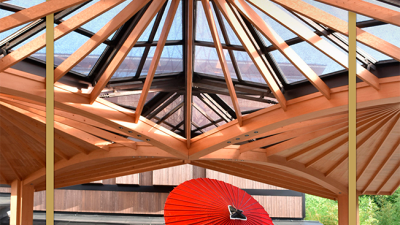Frida Escobedo, the groundbreaking architect hailing from Mexico City, emerged onto the architectural scene with her eponymous studio in 2006. Initially acclaimed for her exceptional work within Mexico, such as the transformative projects at Hotel Boca Chica (2008), Pabellón El Eco (2010), and the expansion of La Tallera Siqueiros in Cuernavaca (2012), it was in 2018 that she garnered global recognition for her design of the prestigious Serpentine Pavilion in Kensington Gardens, London. Notably, she became the youngest architect to undertake this esteemed commission. Her most recent accolade is the commission to design the new wing for Modern and Contemporary Art at the Metropolitan Museum of Art in New York, making her the first woman and youngest architect to design for the institution.
Accompanying her numerous awards, such as the Architectural League of New York’s Young Architects Forum Award (2009), the BIAU Prize (2014), and the Architectural Review Emerging Architecture Award (2016), Escobedo was recently honored with the Charlotte Perriand 2024 Award by La Créateurs Design Association & Awards.


Beyond her architectural practice, Frida has shared her expertise through teaching at esteemed institutions like Columbia University, Architectural Association in London, Harvard University, University of Rice, and most recently, Yale University.
One of her hallmark projects creatively responds to the conventional vertical housing design paradigm, opting for a distinctive approach. Instead of narrow and inefficient balconies as extensions, Escobedo’s design “folds” these balconies inwards, crafting private courtyards. This ingenious strategy produces a series of vertical courtyard homes, playing with different levels of intimacy through strategically placed patios while maintaining a harmonious connection between the interior and exterior spaces.


Another notable feat was her design for the Serpentine Pavilion in 2018, employing a seemingly simple gesture. Nestled in Serpentine Gallery Park, the pavilion consists of two rectangular volumes, one nested within the other, with an inner courtyard subtly aligned to the north – an homage to the prime meridian established at the Royal Observatory in Greenwich in 1851. This arrangement generates irregular geometries and interstitial spaces, creating a serene environment where time seems to slow down, enhancing the interaction between the interior and its surroundings through architectural elements that filter and dramatize the relationship between spaces.
Escobedo’s innovative use of traditional Mexican architectural elements, like the celosía, shines in her projects, balancing functionality with ethereal design. Her latticework walls not only provide practicality but also impart a sense of weightlessness, ushering in a visual continuity and dynamic energy throughout her creations, merging interior spaces with the surrounding environments seamlessly.



Frida Escobedo’s distinctive approach to architecture blends innovation with heritage, creating spaces that transcend the conventional and engage with the human experience, marking her as a visionary shaping the future of architectural design.
Photos: courtesy.

Subscribe to our newsletter to get all the news for those who chose luxury as a lifestyle.












Comments